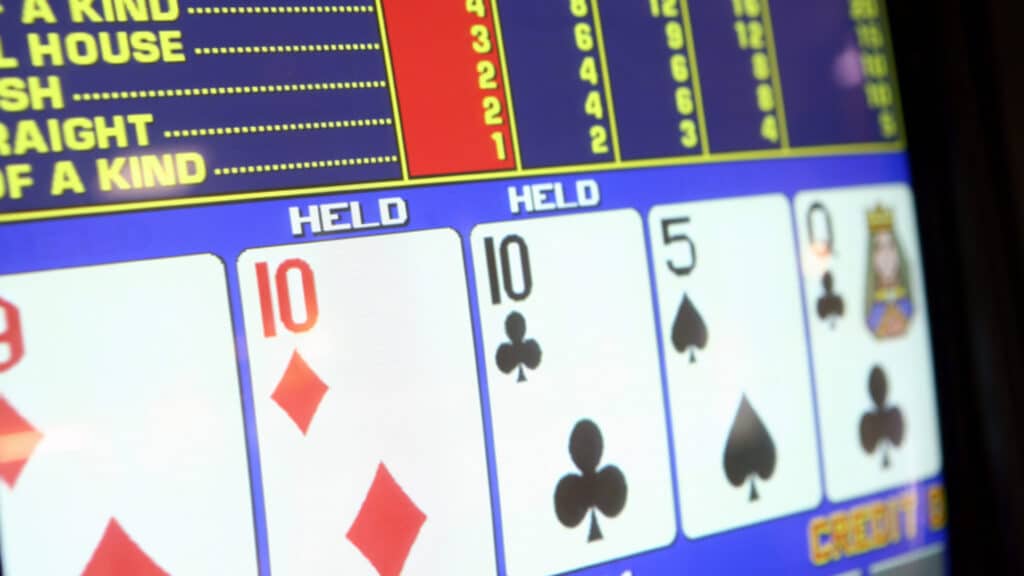Online video poker is a popular casino game that combines elements of both slots and traditional poker. While it's a game of skill and chance, players who understand how to manage their bankroll effectively often find themselves with a more enjoyable and rewarding experience. In this comprehensive guide, we’ll explore the importance of bankroll management for online video poker, offering practical strategies for beginners and advanced players alike. Whether you're just getting started or looking to refine your skills, mastering your bankroll is essential for long-term success.
Why Bankroll Management Matters in Online Video Poker
In any form of gambling, managing your bankroll is crucial for sustaining your playtime and maximizing your chances of success. Without proper bankroll management, even the best strategies can be derailed by poor money handling. Video poker, despite being a skill-based game, is still a game of chance, meaning that variance plays a significant role. With proper bankroll management, you can minimize the risk of going broke and increase your odds of having a positive return on your investment in the long run.
Bankroll management involves creating a system that helps you determine how much money you should bet, how long you can play, and when it’s time to stop. It keeps your emotions in check, ensures that you're playing within your limits, and helps you avoid chasing losses—something that can be especially tempting in video poker when things don’t go as planned.
The Role of Variance in Video Poker
Variance refers to the ups and downs in your results due to the inherent randomness in the game. Even if you play optimally, you will experience periods of wins and losses. Bankroll management helps you navigate these swings without running out of funds or making rash decisions based on short-term results. By understanding variance, you can set realistic expectations and avoid putting your entire bankroll at risk.
Understanding Your Bankroll: How Much Should You Set Aside?
Before diving into video poker games, you need to determine how much money you are willing to set aside for gambling. This is called your bankroll. The size of your bankroll will dictate your betting strategy and how long you can play without depleting your funds.
Determining the Right Bankroll Size
To determine the right bankroll size, consider factors such as your betting strategy, game selection, and the volatility of the video poker variant you're playing. As a general rule of thumb, most players should aim for at least 100 times the cost of their maximum bet. For example, if you’re playing a video poker game where the maximum bet is $5 per hand, your bankroll should be at least $500. This will give you a cushion to absorb the inevitable swings in variance.
For advanced players, you may want to consider increasing your bankroll size to account for higher volatility in certain games or to allow for longer sessions of play. Higher volatility games, like "Jacks or Better" or "Deuces Wild," require a larger bankroll because they tend to have more significant swings compared to low volatility games.
How to Break Down Your Bankroll for Specific Sessions
Once you’ve determined your overall bankroll size, you should break it down into manageable portions for each individual gaming session. A typical video poker session might last anywhere from 30 minutes to a few hours, depending on how fast you play. A session bankroll will allow you to adjust to winning or losing streaks without affecting your long-term funds.
For instance, if you have a $500 bankroll and you plan on playing for an hour, consider allocating $50 for each session. If you lose your session bankroll, it's time to stop playing. Alternatively, if you're ahead, you can either increase your session bankroll or keep it the same and pocket your winnings.
Bet Sizing: Finding the Right Balance
Bet sizing is a key component of bankroll management. In video poker, it's essential to find a bet size that aligns with both your bankroll and your risk tolerance. Betting too much can quickly deplete your funds, while betting too little might not maximize your potential return.
Choosing Your Bet Size Based on Variance
As mentioned earlier, variance in video poker games can be high. Therefore, your bet size should correspond to the volatility of the game you’re playing. For low-variance games like "Jacks or Better," you can afford to bet slightly higher amounts per hand, as the payout frequency is more consistent. On the other hand, high-variance games like "Deuces Wild" or "Double Bonus Poker" tend to have larger payouts but less frequent winning hands, so it’s advisable to lower your bet size to ensure you don’t run out of money during a losing streak.
A good rule of thumb is to bet no more than 5% of your bankroll per hand. If you're playing a lower-variance game, you can safely bet a little higher—perhaps 2-3% of your bankroll per hand. This strategy ensures that you have enough funds to survive longer sessions and mitigate the risk of large swings.
How to Use Paytables to Guide Your Betting Decisions
Another important consideration when determining your bet size is the game’s paytable. Different video poker variations have different paytables, and understanding them can help you adjust your strategy and bet size accordingly. For example, a paytable that offers a higher payout for a full house or a flush can be tempting, but it’s crucial to calculate whether betting higher amounts is sustainable within your bankroll limits.
Bankroll Management Strategies for Online Video Poker Players
Now that you have an understanding of bankroll basics, let’s delve into specific strategies you can implement to manage your bankroll effectively during your video poker sessions.
1. The "Percentage Rule" for Betting
One of the most popular methods for bankroll management in online video poker is the percentage rule. This strategy involves betting a fixed percentage of your bankroll on each hand. As a general guide, this percentage should range between 1% to 5% of your total bankroll. Betting a fixed percentage ensures that your bets scale with the size of your bankroll and reduces the likelihood of depleting your funds during a losing streak.
2. Stop-Loss and Win-Loss Limits
Setting stop-loss and win-loss limits is a highly effective strategy for managing your bankroll. A stop-loss limit is the maximum amount of money you’re willing to lose during a session. For example, if your stop-loss limit is $50, you will stop playing once you lose that amount. Similarly, a win-loss limit dictates when you should leave the game once you’ve reached a certain win or loss threshold. A common win-limit strategy is to stop playing once you’ve won 50% of your session bankroll, ensuring that you lock in profits before returning to a losing streak.
3. Switching Machines Based on Bankroll Health
Another effective strategy is to switch video poker machines based on your bankroll health. If you’re playing a higher-variance game and your bankroll is shrinking rapidly, consider switching to a lower-variance game to conserve your funds. On the flip side, if you’re experiencing a winning streak and your bankroll is growing, you can increase your bet size or try a higher-variance machine to maximize your winnings. Always adjust your gameplay to match the state of your bankroll.
4. Practice Bankroll Management with Free Games
If you're new to online video poker or are looking to improve your bankroll management skills, take advantage of free-to-play video poker games. These allow you to practice without risking your own money. You can experiment with different bet sizes, strategies, and bankroll management techniques until you feel confident enough to apply them in real-money games.
Advanced Bankroll Management: Optimizing Your Play
For experienced players, advanced bankroll management strategies can take your game to the next level. These techniques require a deep understanding of the game’s variance, paytables, and optimal strategy.
1. Progressive Betting Systems
Progressive betting systems, such as the Paroli or Labouchère system, involve increasing your bet size after a win or loss. These systems can be effective in managing variance, but they should be used with caution. It’s essential to understand that no betting system can overcome the house edge or guarantee profits in the long run. However, when used correctly, they can help you stay disciplined and manage your bankroll during extended play sessions.
2. Bankroll Segmentation
Some advanced players prefer to segment their bankroll into different "pools" for different video poker games. For example, you might set aside 60% of your bankroll for low-variance games, 20% for medium-variance games, and 20% for high-variance games. This allows you to tailor your bet sizes and strategies to each game’s variance while ensuring that your overall bankroll stays intact.
3. Cashing Out Early to Lock in Profits
For experienced players, knowing when to cash out is just as important as knowing when to bet. If you’re ahead in a session and have hit your win limit or are nearing your stop-loss, consider cashing out and locking in your profits. While it can be tempting to continue playing, especially when you're winning, cashing out at the right time is essential for protecting your bankroll and avoiding emotional decisions that could lead to losing your winnings.
Conclusion: Mastering Bankroll Management in Online Video Poker
Mastering bankroll management is crucial for success in online video poker. Whether you’re a beginner or an advanced player, understanding the principles of bankroll sizing, bet sizing, and session management can greatly improve your chances of having a rewarding experience. By using effective bankroll management strategies, you can navigate the volatility of video poker, minimize risk, and maximize your enjoyment of the game. Remember, the key to long-term success is not just about winning—it’s about managing your money wisely and playing within your limits.



